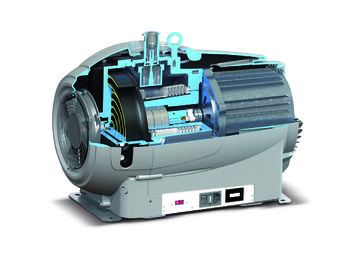

There are many types of pumps for gases out there in the world, and the most useful feature that they have is the application in the field of vacuum technology. Vacuum pumps come in all sorts of shapes and sizes. Pumps are designed to work up till a particular level of pressure, and different pumps are required to achieve low to high-pressure vacuums. To learn more about the various kinds of vacuum technology you can visit our website.
In this article, we will primarily talk about two main types of vacuum pumps and the main differences between them.
Scroll Pumps:
Scroll pumps have a unique position in the world of vacuum technology. They are classified as low to medium vacuum range pumps as they can generate a pressure level between 1000 and 1 mbar. Such vacuum pumps are usually used when a low vacuum is required and are typically not used in situations where an extreme level of vacuum is needed. Secondly, they are also used in combination with Turbo Molecular Pumps to rough the vacuum chamber and adapt the pressure to the turbo pump operation and acting as backing pump on the turbo pump foreline.
As the name suggests, scroll pumps are composed of two scrolls that are shaped like a spiral. One of them is supposed to move while the other scroll remains static. The scrolls are shaped in such a manner that they trap the gas from the vacuum chamber. As the machine keeps operating, it squeezes the area that the gas occupies, thus compressing it, until it finally passes through the exit valve. In this way, vacuum is created by the scroll pump. As you can see, this is a dry scroll pump as there is no lubrication such as oil or water involved. This dry pump function zeros the risk of vacuum system pollution by hydrocarbons.

Turbo Pumps:
The primary function of a Turbomolecular pump is to create high vacuum in the range of pressure between 1×10^-7 and 1×10^-10 mbar. As discussed earlier, turbo pumps do not function alone. The vacuum chamber is first roughed by a low pressure vacuum pump, as the turbo pump cannot operate at atmospheric pressure and needs a certain level of vacuum before it can start to operate. Turbo pumps are applied in academic experiments, analytical instruments, and industrial processes that require a high or extremely high vacuum .
The principle of operation of a turbo pump is very simple.. There are two forms of blades, a rotating one and a static one that are shaped in an aerodynamic fashion. The rotor blades rotate and provide a momentum to molecules of gas, pushing them down through the static stage where they will be grabbed by the second rotating stage and pushed down again . The set of stator blades are shaped in such a fashion that the compressed gas above it and then pushes down towards the next step of rotor blades that further compress it. This method is repeated over and over again with multiple pairs of blades, until the compressed air and particles are finally passed through an outlet port. . Turbo pumps are very popular and are also a form of dry pumps thus making them safer from contamination. Agilent brilliantly describes turbo pumps in full details on their website.
Main Differences:
As you can see, the number one difference between the two of them includes the level of pressure they can achieve. . Scroll pump vacuums can range from a pressure level of approximately 1000mbars to 1mbar. A turbo molecular pump is supposed to go even lower than that, down to a 1x 10^-10 mbar range
The second difference is their operation. While scroll pumps collect the gases in one place and then keep pushing them out of the vacuum chamber by reducing the volume of the space and compressing it, turbo pumps utilize the technology of spinning turbine fans to pull the gas out of the vacuum chamber.
However, even with their differences, both of them have their own unique applications. In fact, these two types of pumps can be seen being used in conjunction. The scroll pumps are used to create the ideal pressure levels from where the high vacuum turbo molecular pumps can eventually start functioning from.